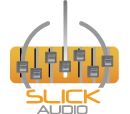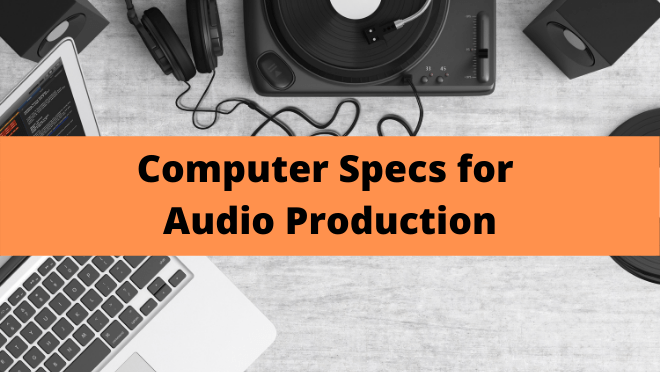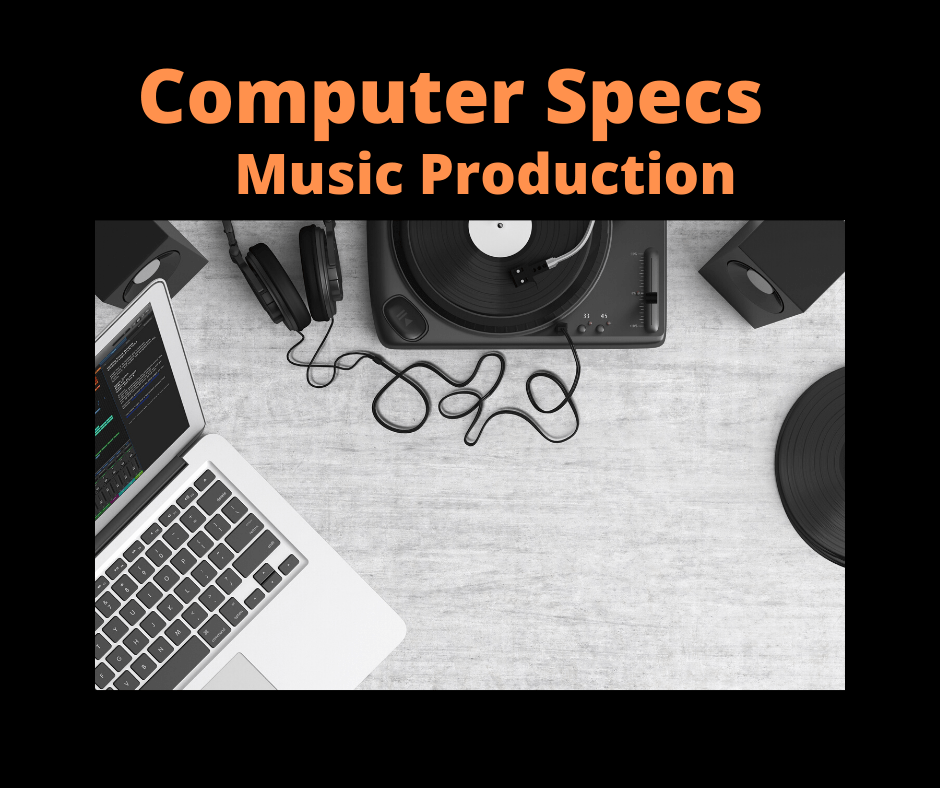Computer Specs for Audio Production
How to Spec or Size a Computer for Audio Recording.
Recently Jim made a video discussing how you properly size a computer for recording audio. Meaning CPU, memory, disk, etc. for what you need for your music production slash business. If you’re making music. You could do it for fun or run a studio, be it a project or professional. Even a monster studio it doesn’t matter, it’s still a business. Where not just here to have fun with it, we are here to make money. Feed our families, raise our kids, pay the bills the stuff we need to do in our lives.
Building the best computer for you.
The first comment we often hear is I need a ton of RAM. “The More Ram the Better”. I have to ask why? You have to build a system that’s best for you.
What CPU Should I use?
So let’s talk about CPU as a general rule of thumb. Would I use an i3 on an audio computer? Ahhhhh No! Would I put an i5 on an audio computer? Maybe, the maybe is what are you doing. 4,5,8,15 tracks are just a couple of plugins, really no virtual instruments per se. Maybe one of you’s just kind of messing around as playtime you just want to learn. And you know and having a system to run for a couple of years while your kind of get acclimated to the DAWs and all that kind of fun stuff would be great. It would be an absolutely fine fit for you.
Then we have two other flavors, an i7, and an i9. Now I’m not talking about the x-series yet. We are talking about the k series processors. The K series processors would be the z370 or z390 chipset from intel 390 is the newest and what we use. The k series processors can be overclocked and you can see other designations like H at the end and various other designations. Usually, they are power-saving a notebook kind of stuff. We are talking about the K’s. They can be overclocked safely.
In our 2200 series towers and racks, we have the i5k series available and also an i7k series and an i9k series available in the 9th generation processor family from Intel. Then Intel changed the game a little in the K processor structure. In the past 8th generation and earlier Intel processors had hyperthreading. Hyper-threading turns one processor into two. So if you were to buy a 6-core processor, it would be at and run like a 12-core processor. Windows 10 operating system can take advantage of that and run faster.
In the 9th Gen series the i5 and the i7 in the K series, no longer have hyperthreading. So if you were to buy a 6-core processor, then you get a 6-core processor because there is no longer hyperthreading. But the i9 is where they added hyperthreading. Like i9 9900 process is one of the processors that can-do hyper-threading and it’s fast. I know because I have one and it’s ripping fast.
The X Series processors are from Intel.
The X299 chipset is their Extreme chipset, much like the Xeon chipset many of us were familiar with. Intel still makes a Xeon W Workstation Processor. But Intel shifted direction and the motherboard manufacturers were not making Thunderbolt for the Xeon W processors. So, the Xeon processors which we used heavily until this change really went back to what they were intended for servers, for computing needs like drafting or data-heavy needs. The i9s are extremely powerful. They are as close to Xeon as possible.
As for memory, what would take advantage of memory? Well, that would be a Virtual Instrument. Every time you load a sample, it consumes a chunk of memory. So we then ask how big is the sample, is it a small sample or a big sample? It could even be the same VSTi. But depending on what you pick could be radically different. So, what does this mean? Everyone’s needs are different. Generally speaking, I would never sell a computer with anything less than 16 gigs of ram. Laptops are different and we are not going to discuss this, but f we go up to 32 gigs, that is a sweet spot for most users. They are great for bedrooms or small studio PCs, but 64 gigs of ram are where you want to be for some pretty wild stuff. But as for 128 gigs of ram, your likely not going to use it. But for power users that use lots of VSTs simultaneously, then your gold would work for you. More than 128 gigs of ram that at this point in time is a waste of money, but that could change in the future next year, the year after we will see.
What Hard Drive Should I Use?
Hard Drives–Storage is the last piece. An SSD is a Solid State Disk, essentially memory in strip form shoved into a hard drive like the M2. The other is spinning spindle platters we are all familiar with. There is a recommended type of drive you should use and why. The operating systems should be used on SSDs. Your samples should always be on SSDs, but your data does not matter. You will not write enough data and enough tracks to overcome the bus. Or overcome the speed of a 7200-speed drive, even with hundreds of tracks simultaneously recording. But if you travel with your PC, you might want to consider SSDs. They are quieter, the hard drives are more durable and shock-resistant.
So the next step is to look at what interface you’re going to use. Thunderbolt/USB C is one of our current favorites. USB 3, USB 2, FireWire (which is all but dead), and others like Madi, PCI-e. But for this example, we are going to use Thunderbolt. Why is it better at the moment, well because it can write directly to the memory. So it really has some cool advantages.
So now you have the fast-cool interface. How many channels are you going to need, 8,16,32,48, 64? You need to know how many channels you want to record because this has nothing to do with playback only recording.
For our example, we will say we have 24 track recordings like microphones, instruments, and no plugins straight-up recording. (We are not talking about playback yet). You can easily get away with a Thunderbolt interface and 32 gigs of ram on an i7 processor like in out 2200 series computers. As for the disk space we already covered that previously, so no need to repeat it.
Virtual Instruments
Virtual Instruments like Vienna Instruments, Native Instruments, Omnisphere. All really great programs, but they are memory pigs. They will consume a lot of CPUs, Memory, and bandwidth to memory. If you use a lot of them, that is when you need to consider an i9 Extreme CPU. Then you want to have between 64 and 128 gigs of ram. So then why would you need so much memory? Well, that’s a good question. Just because you are doing something one way today does not mean you will continue to do it that way. Let’s face it, these programs are not getting any smaller or lighter, they are only going to get bigger.
X Series Processors vs K Series Processors
There are these things called PCIe lanes, and in a standard K Series processor, there are twenty-eight PCIe lanes. While in an X Series Processor, there are Forty-Fours, which is roughly double the amount of data that can be pushed to the bus (again, just for the example). So the throughput is in an order of magnitude faster. Growing in an exponential fashion, not a linear curve.
Plugin’s
Plugins are similar to VSTI’s. You don’t have samples to load, but they can vary radically from plugin to plugin. For instance, if you’re running true HDX plugins, the DSP (Digital Signal Processing) is being done on the HDX card. The same can be said for Universal Audio such as the Satellite or the Octo2 PCIe card. That is offloading the processing from the CPU and does most of the processing for the plugin. Regardless of the way you process the DSP in the PC or via a card, be sure to run the plugins smart. Use features like a bus or a group track and apply the plugin to it instead of each drum individually. This is a smart use of the plugin and the hardware resources needed to run the plugin.
Other Tips
- When Working with VSTIs–Freeze the tracks once you have the sounds you need. It unloads the unneeded BS and allows the PC to run more efficiently.
- If you’re doing between one and twenty tracks, an i5 would probably work for you. With 16 to 32 Gig of ram depending on the types of plugins and virtual instruments, you are using.
- When you get above the 20-track level, like 100- 120 tracks, an i7 is a great processor. Assuming you are using a moderate number of plugins, and a couple of Virtual Instruments. Memory should not be less than 32 gigs, with 64 gigs being better.
- If you record more tracks, more plugins, and lots of Virtual Instruments. You need to look at a PC with lots of power, like our 4200 series PCs with an X Series i9 processor.
- If you’re going to spend lots of money to put in the best converters and the best instruments, you need to have the best computer, which is a Slick Audio computer for your studio.
Sign Up for Newsletter






